I was at Bontebok Park south of Swellendam this week specifically to get another look at Haworthia floribunda there and why it is so different. On the way I did some exploring at Stormsvlei about 25km west of Swellendam where I know H. mutica Klipport in a shale environment, and a very odd H. mirabilis growing on a small patch of manganic conglomerate. But going south onto the northern slopes of the Bromberg we found three populations of H. mirabilis in sandstone that are again “different” in the sense that “H. groenewaldii” could be different from H. mutica. This is just a local geological phenomenon and fully sequential with H. mirabilis to all compass directions. If you extrapolate this to Swellendam you have to conclude that the Swellendam mix of H. floribunda, H. marginata, H. minima, H. floribunda, H. mutica and H. retusa is the way it is because of the unusual geology of the area. The Bontebok Park is a relatively massive area of tertiary gravel of mostly river origin and derived from Table Mountain Sandstone. Tertiary gravels east and south are derived from silcrete and ferricrete. I do not know the detail of the mineralogy but it most definitely forms the basis of the soils, vegetation and habitat across the Southern Cape. I specifically looked at H. marginata in the park and see that it was in seed i.e. September flowering with massive capsules and seed. Now if Marx can persuade someone that this is a different species, I accept that I am a monkey’s uncle and that the differences in H. marginata elsewhere e.g. Drew, Bredasdorp and Heidelberg or Riversdale, mean there are several similar species. Oh, I forget – that means H. floribunda would also be several species, and so is H. minima. But then H. mutica is of course several species and H. retusa several dozen. H. mirabilis several hundred.
This is 8017 from the Bontebok Park Swellendam. In some circles I am expected to get excited and see this as something new. In the context of the Haworthia in the wider area, this is a variant of H. floribunda. In my flower report it is evident that there is not much difference between the flowers or flowering time of this species and H. mirabilis. It hybridizes with H. retusa, H. retusa (turgida), and H. pygmaea despite differences in flowering time, and also with H. mirabilis. There are populations that I think are an older product of such hybridization (or failure to have ever separated).
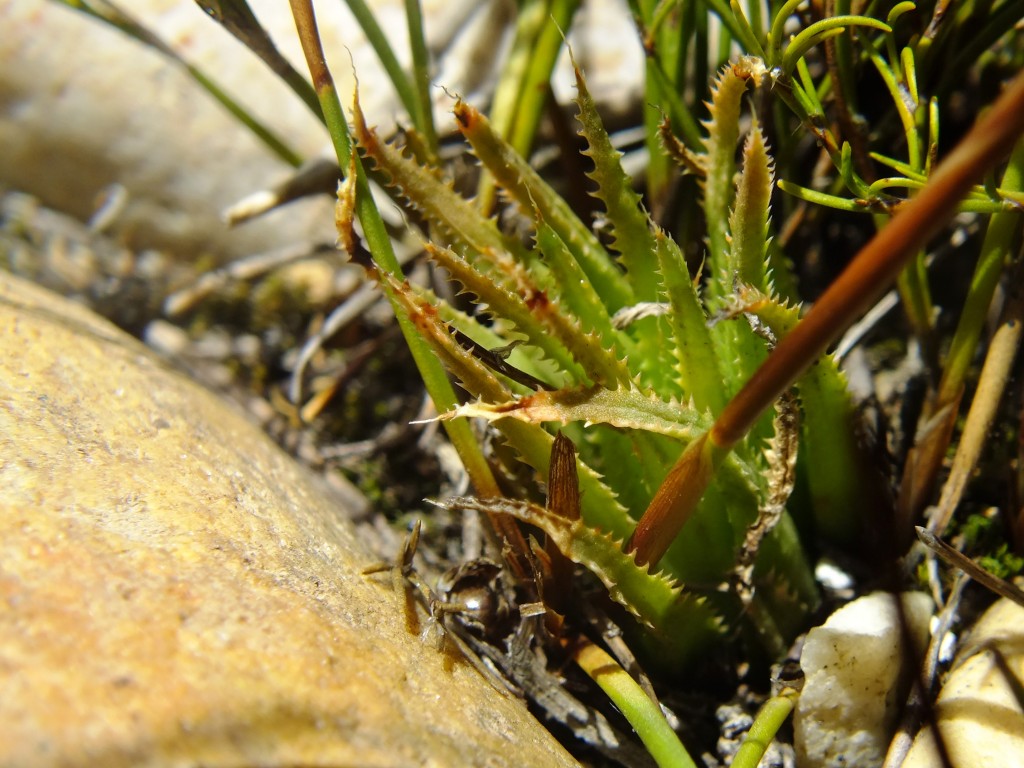
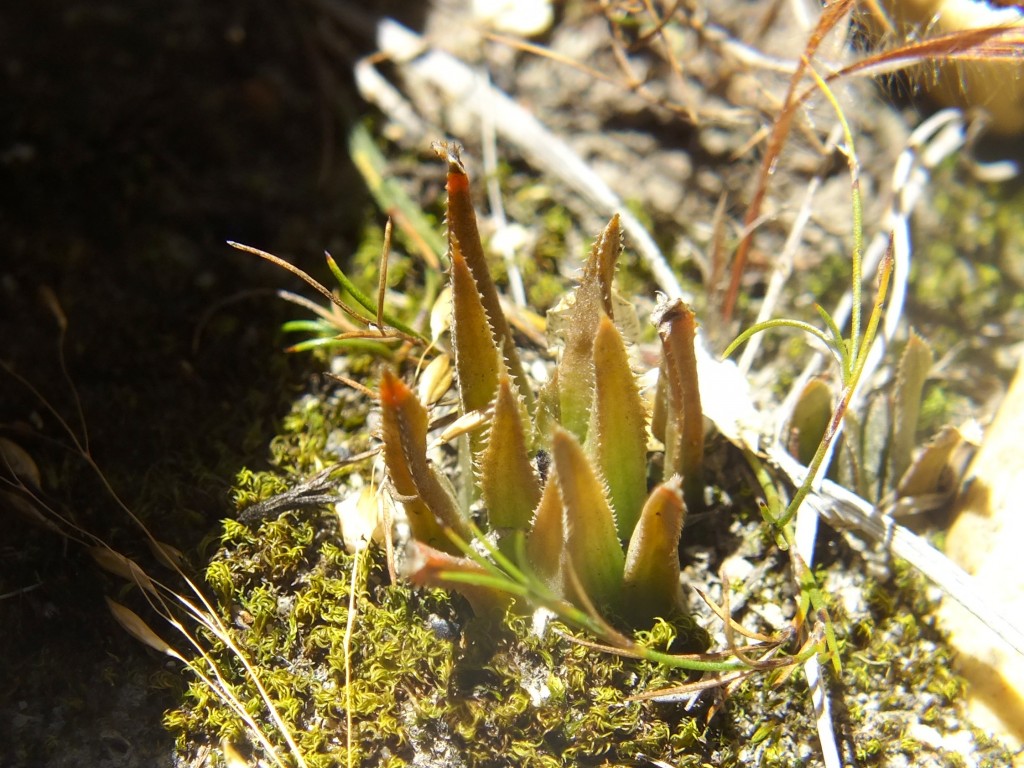
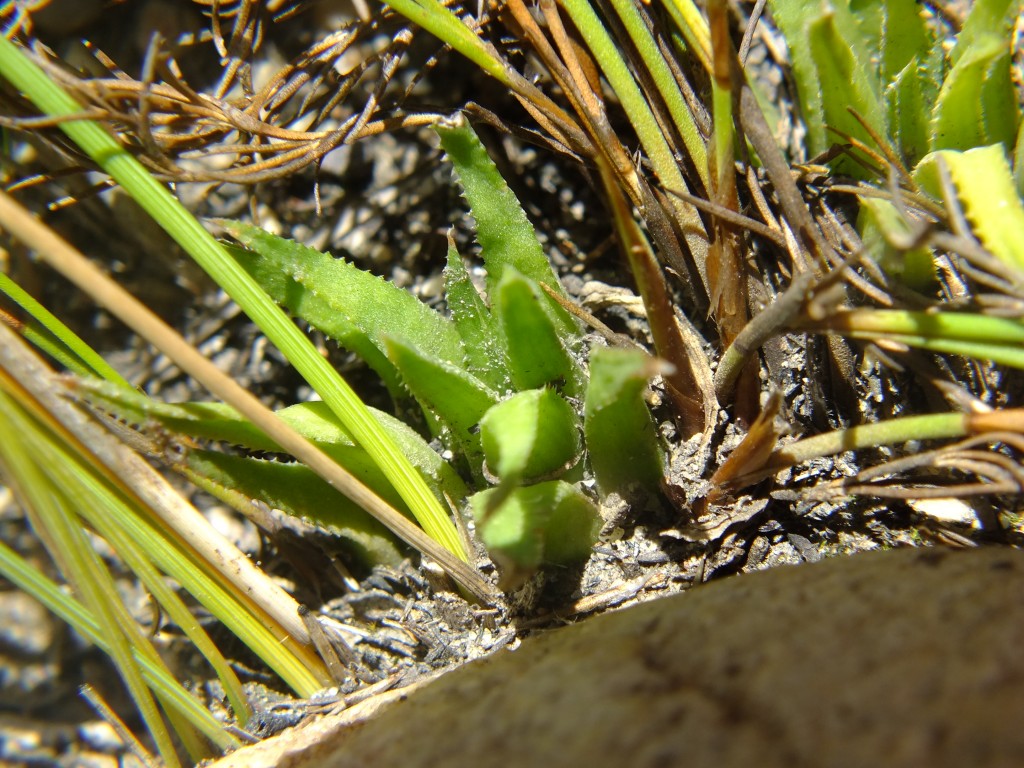
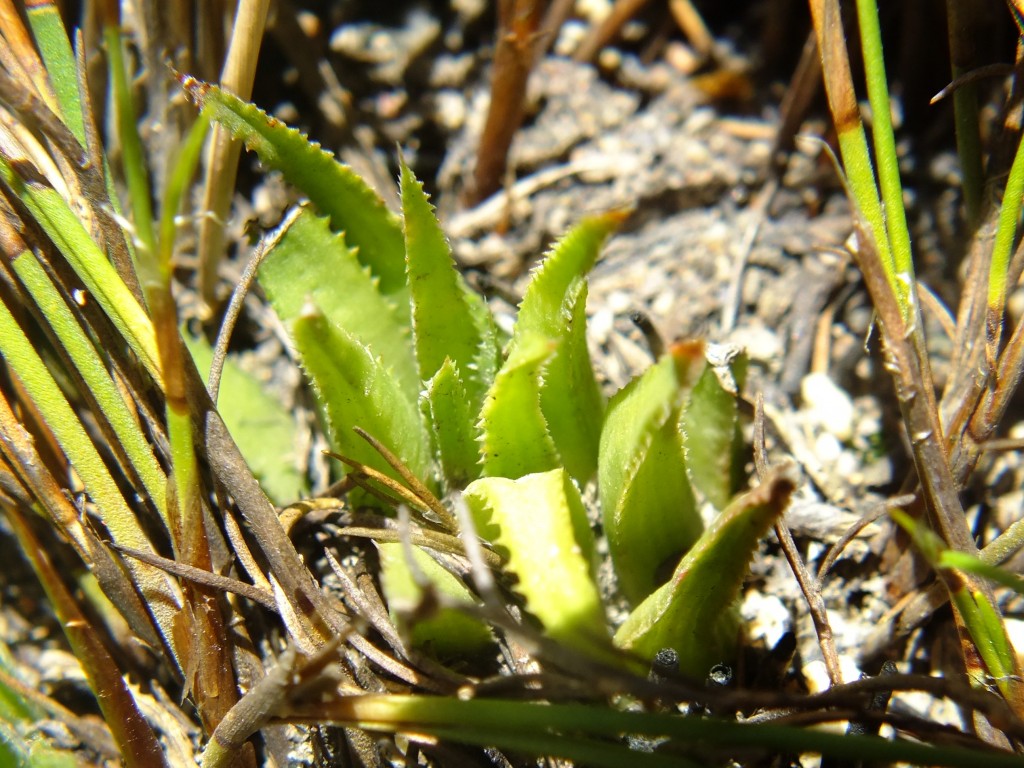
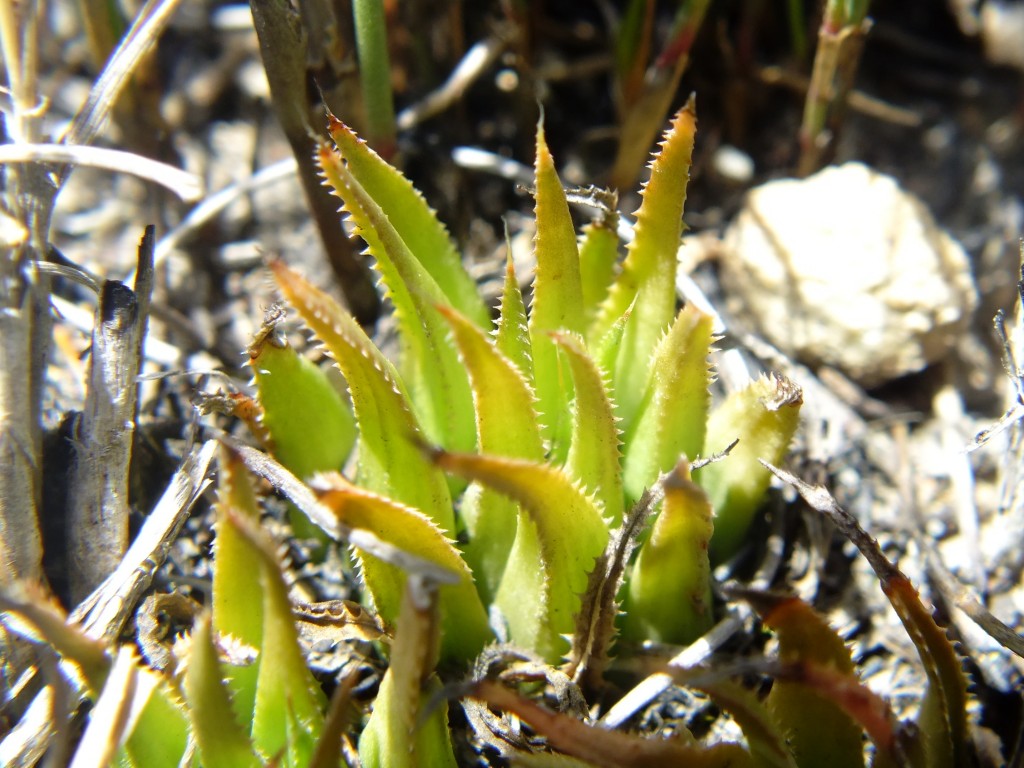
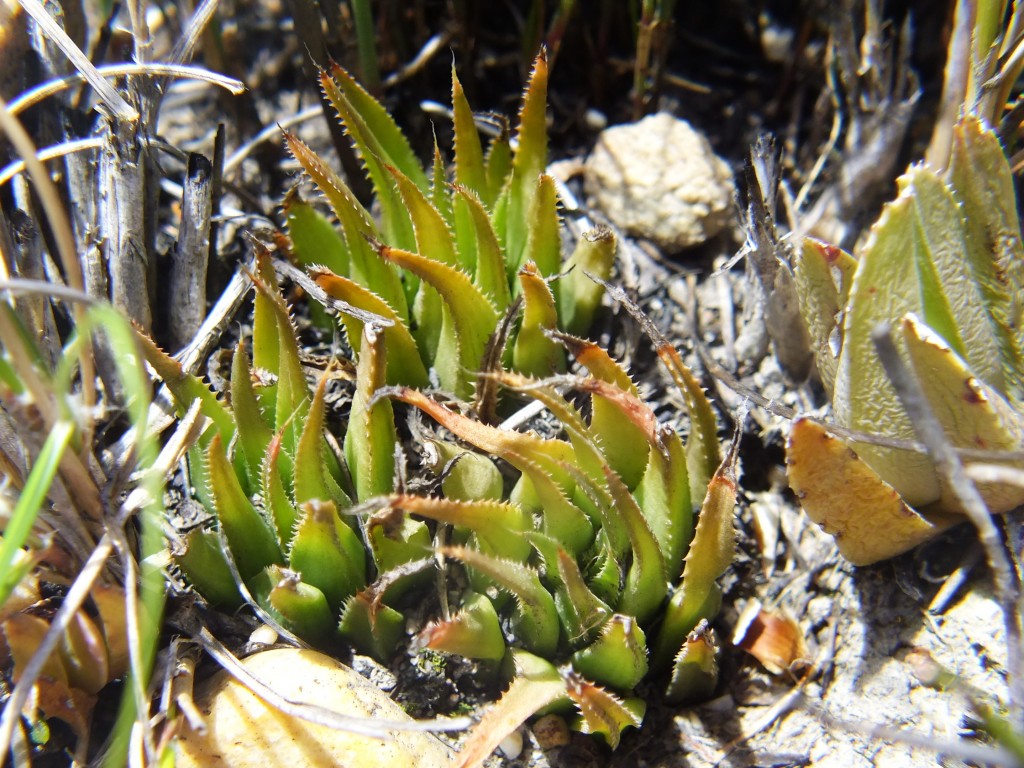
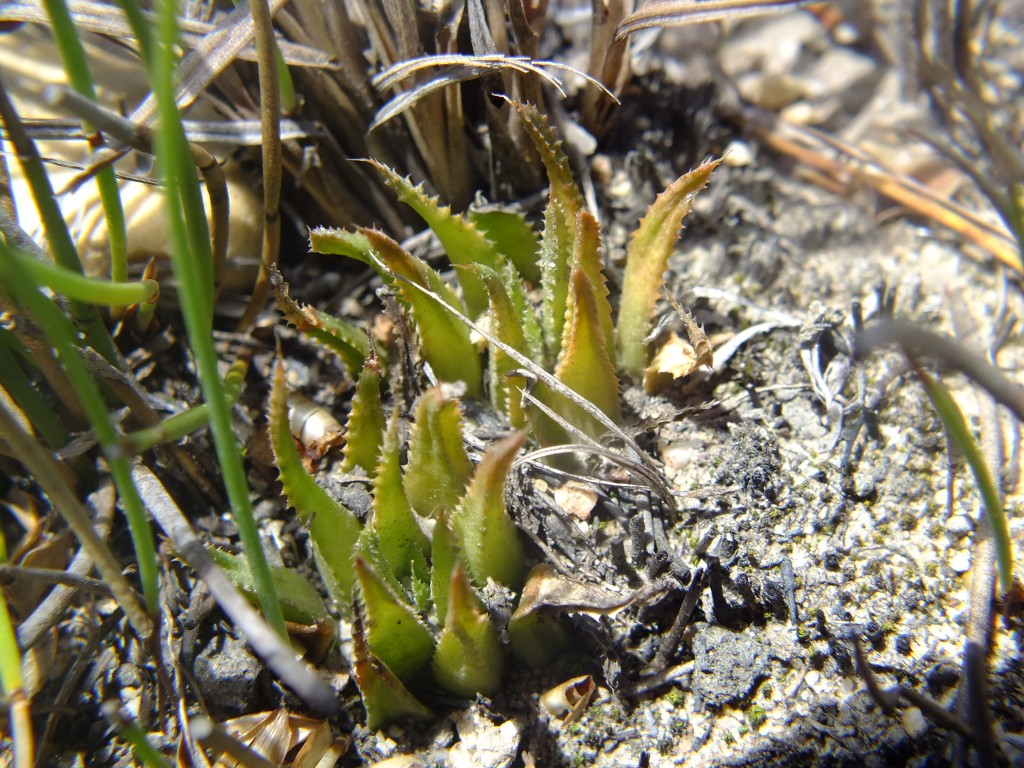

Typical – an over-used comment. A white small glass ball is found and named “Marble alba”. Then a red one is found and named “Marble rosea”. Then several other colours turn up and “rosea” is lumped under “Marble alba” as a variety. Automatically all the others become “Marble alba var. alba” if they are not specifically named or not put under “rosea”. If “rosea” had started as “Marble alba var. rosea”, there would automatically have been a “var. alba”. All other glass marbles known and unknown would have been “var. alba” even if no another white marble ever turned up. A type just establishes a name and the best way to determine how that name is used by an author is by ALL the illustrations and pictures he/she notes. A type that establishes a name may be an oddity or a single variant that does not easily establish a use. The advice handed to me by a group of taxonomists in 1972 was that it would be best to scrap all the old Haworthia names and start again from scratch. The group was led by Prof. Schelpe, one of the few professors who as a taxonomist headed the department. He had explained this view in a published article in respect of Gasteria and why he rejected the idea of personally revising the genus. He had no solution for types and names that could not be directly linked to a set of herbarium specimens or similar evidence. Now substitute H. mirabilis for marbles alba and where the contrast of white and red is absent.
————————
Just what is the type form of H. mirabilis and what constitutes H. magnifica? That is the subject of my question about the way in which the typical variety is recognised. There are 4 populations of H. mirabilis in the Park and many to west, east and south. Imagining that there is also a “maraisii” is just crackpot even more so to say “magnifica”. There is quite definitely one system that you can see from many populations and that system inter-twines with two others also on the basis of many populations. At this stage of the available information on these populations there are a lot less species – see also the article Haworthia flowers – some comments as a character source published in Haworthia Updates Vol. 8 by Alsterworthia International. I also started off thinking that there was an H. maraisii and an H. magnifica but changed my mind quite early. In the last ten years I have come to see that both they and H. heidelbergensis are nothing but parts of one system viz H. mirabilis. Ask the authors who think otherwise to present some clear evidence based on good random sampling and statistics. See the Haworthia Updates Vol. 4 article Some variation in Haworthia mirabilis var. sublineata by Loucka and Bayer on the stats of H. mirabilis (sublineata).
—————–
Klipport is a farm a bit off the beaten track on the north side of the Bromberg low range. Bromberg is the eastern end of the Riviersonderend Mountains and is cut off from them by the Riviersonderend River that changes direction to the north to do so and then east again to join the Breede River. Bokkeveld shale is strata-wise above the sandstone of this mountain range and a small amount of shale is present here on the south bank of the river. At Klipport it is a narrow sloping stretch of about 500m long and about 75m wide with white gravel and clays. The vegetation it totally different to the grassy fry Fynbos and renosterveld of the Bromberg and has karoid succulent vegetation with the endemic Gibbaeum esterhuysdeniae and a Brianhuntleya species. The site is also home to a smoothish form of Haworthia pumila, and also to a range of H. mutica variants that might have a name attached by now. Another very interesting species there is Drosanthemum micans. This species has an extraordinary range of variation that parallels that of Haworthia and at Klipport is moving to another face as D. lavisii. It would be very instructive if other Haworthia taxonomists could, or would, take note of this kind of parallel and recognize that there are significant clues to how Haworthia species and their variations are part of a larger pattern.
This small shaly area has a very patchy distribution of the species on it with patches of a restioid and Pteronia. Through some weird quirk a German immigrant ploughed up a vast area of very marginal virginal land and planted gums and pines that after 30 years are still far from harvestable. I doubt if they will ever yield anything. This happened under the eyes of Nature Conservation and the Dept of Agriculture that is supposed to manage land use. The area on the river itself was paradoxically a source of timber in the early Cape days and is now severely infested with exotic gum and wattle. It is this riverine growth that sustains the timber enterprise of the adjoining farm Vaandrigsdrift. Not far away between the shale and the sandstone is a manganese deposit that is now being mined. At the end of this deposit is a tiny set of large conglomerate-like rocks with a variant of H. mirabilis. This species also occurs as an interesting ecotype a short way further east where the shale is less transformed along the sandstone interface. In fact I do not know exactly what it it is that has driven this decay of Bokkeveld shale to kaolinic and bentonitic clays where it has been covered with Tertiary marine deposit at some stage in geological history. Whatever it was, is certainly significant with respect to island-like habitats and “conserved” vegetation remnants.
MBB8028 H. mirabilis SW Klipport
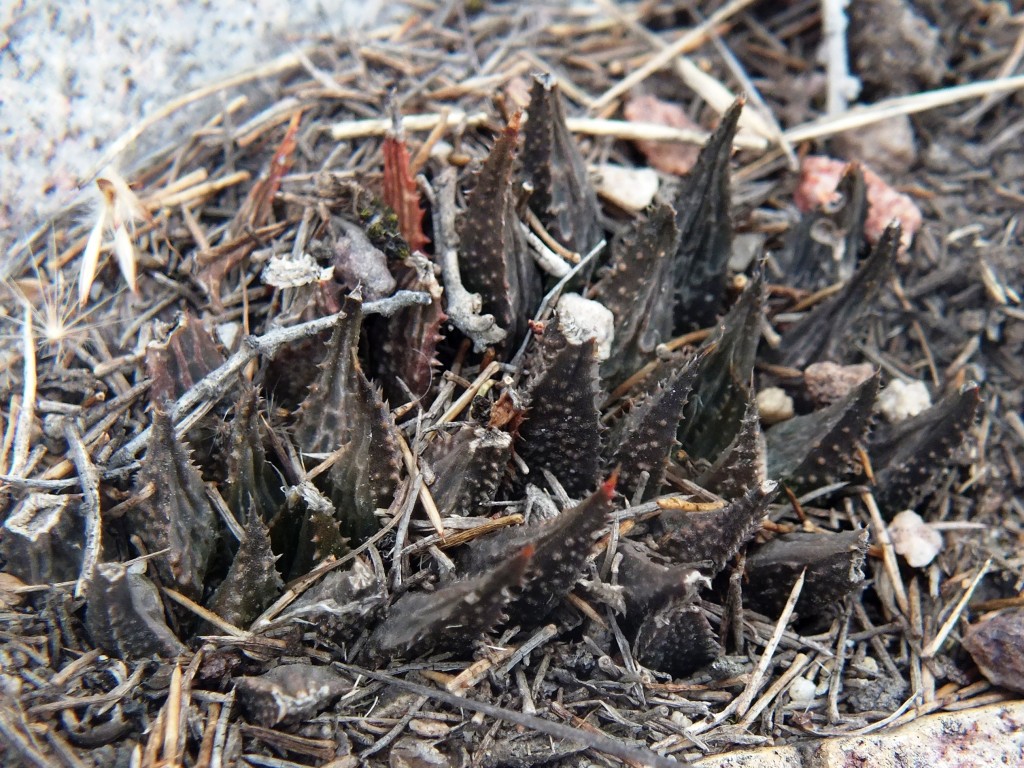
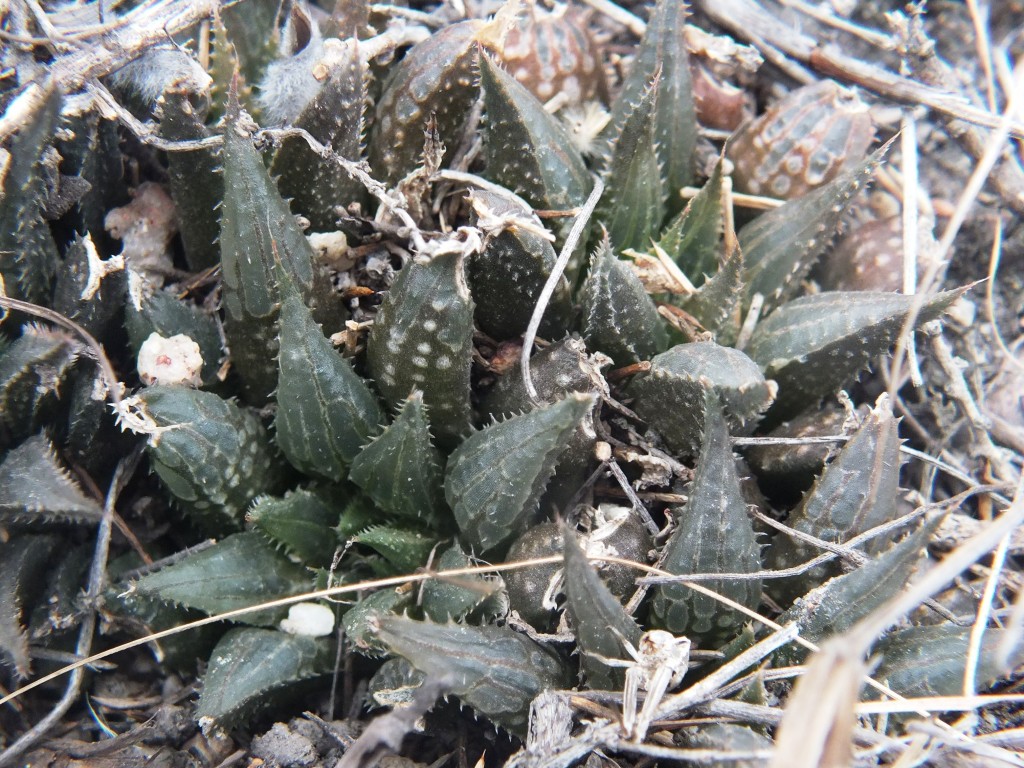
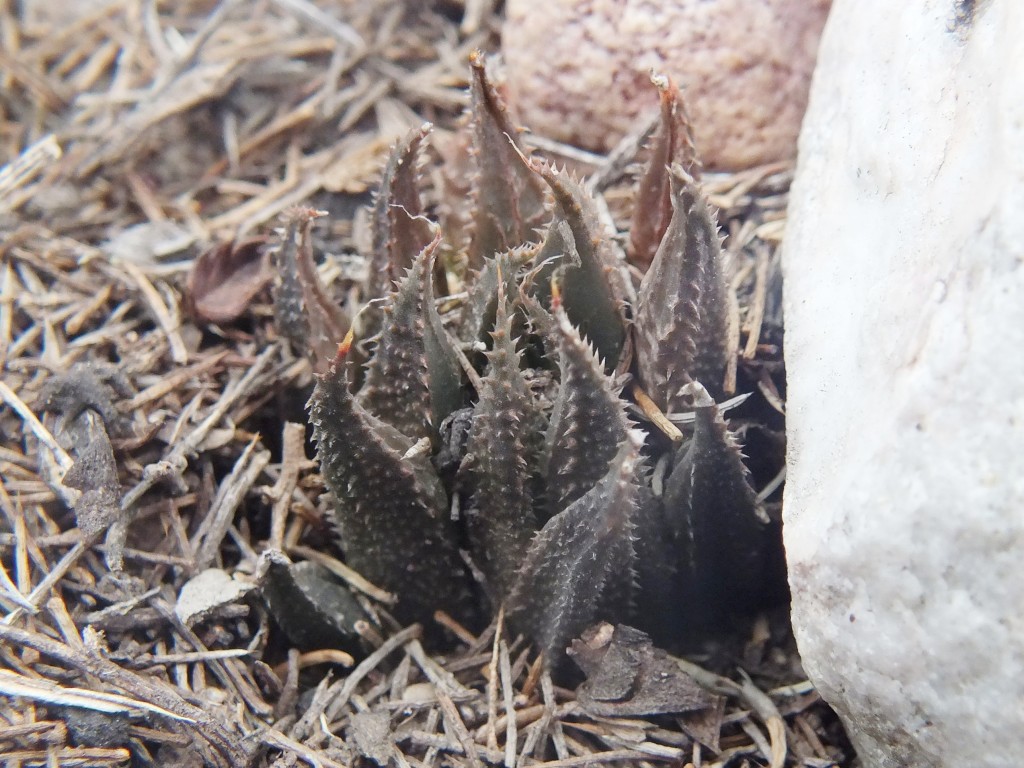
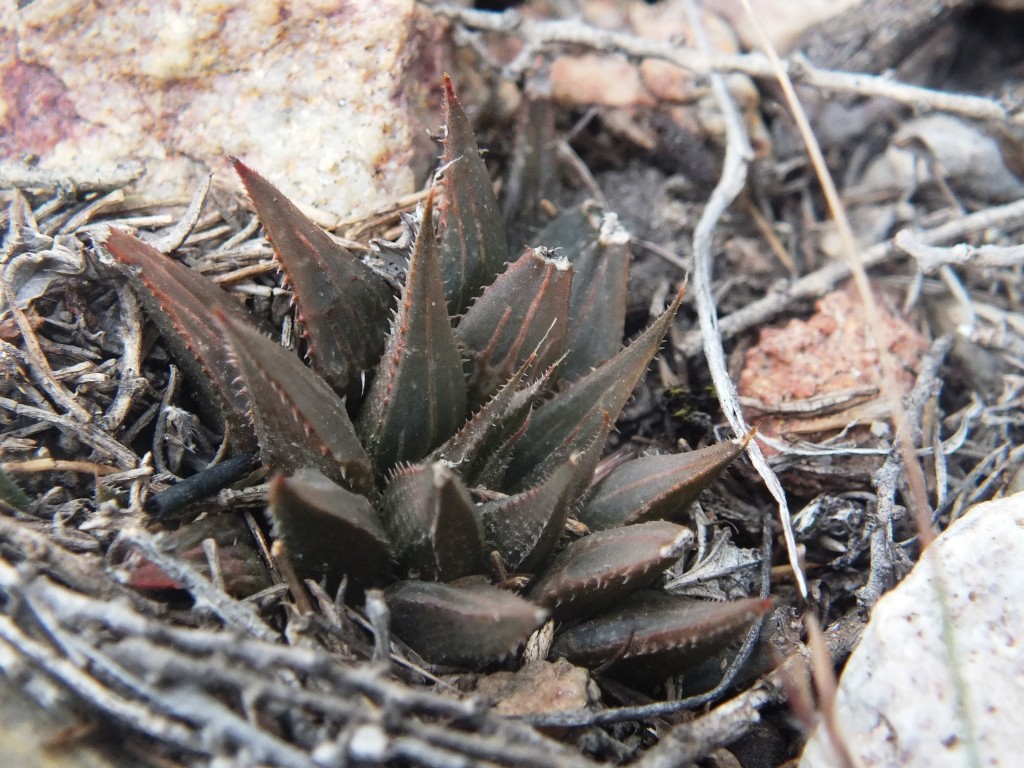
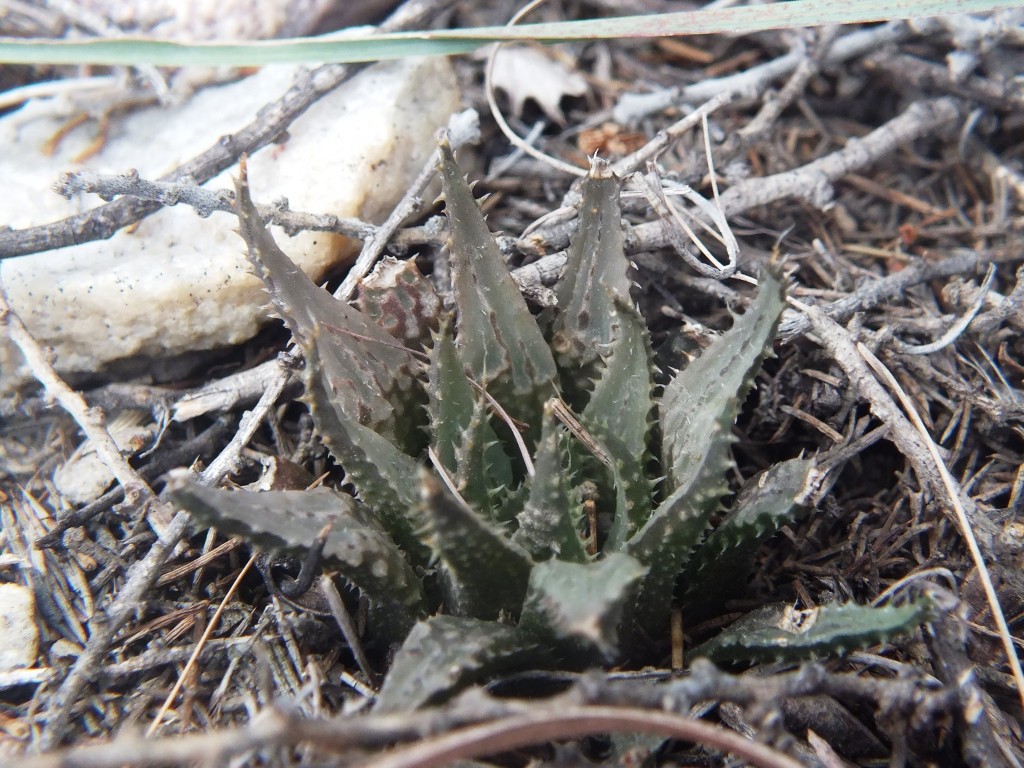
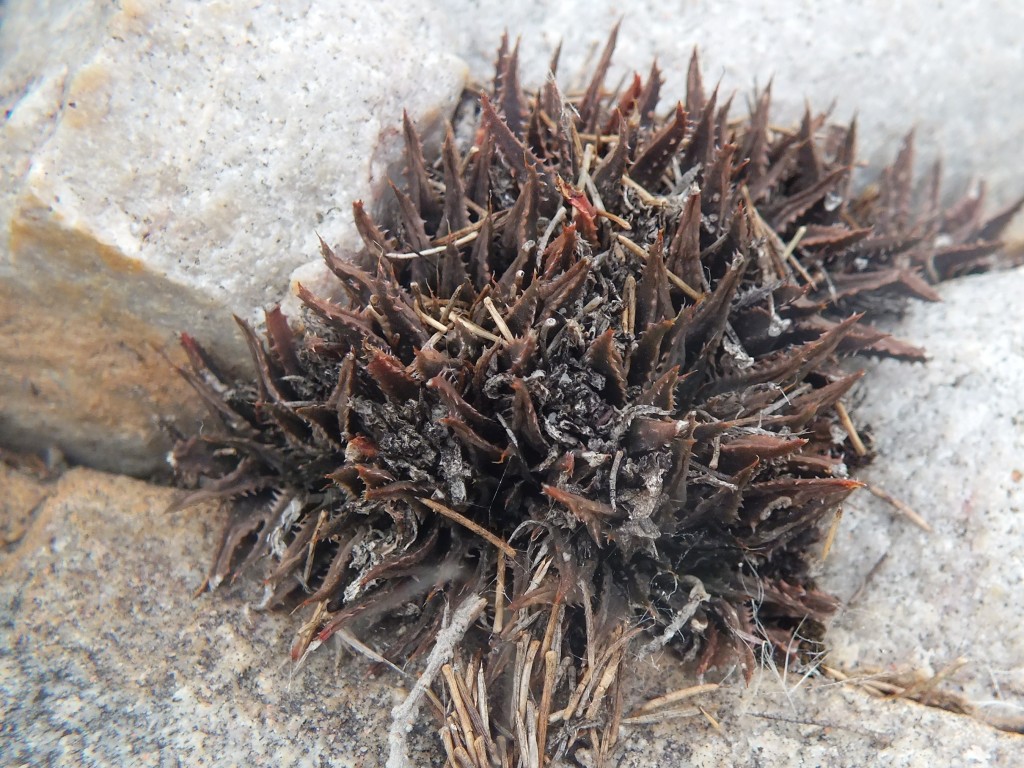
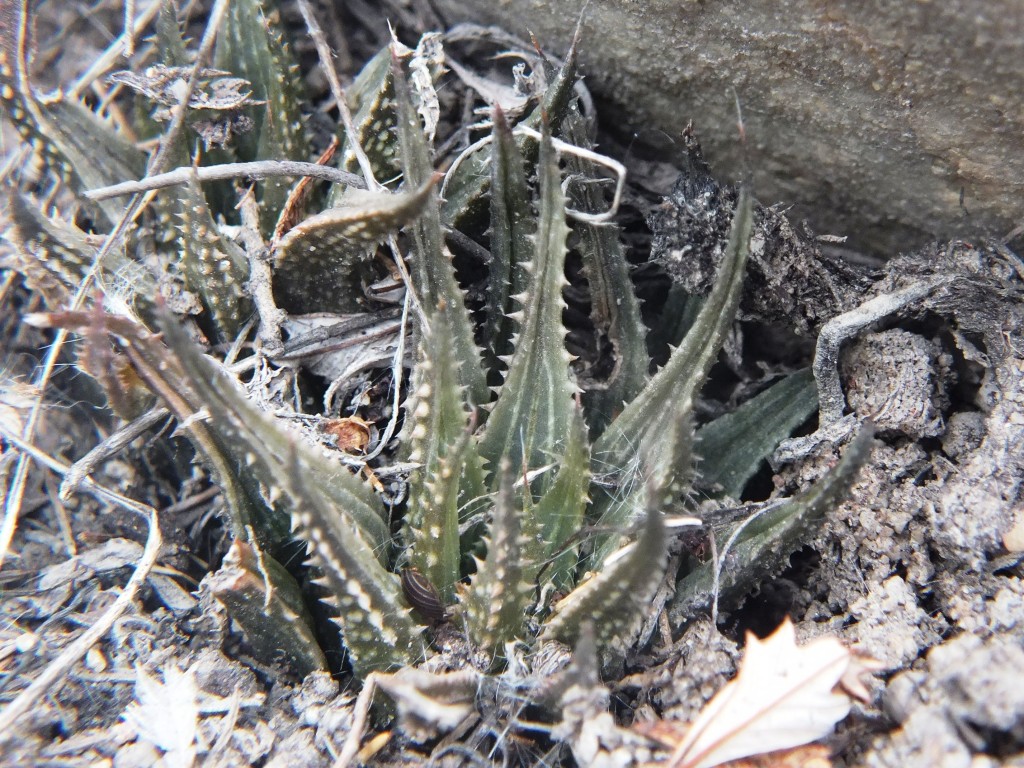
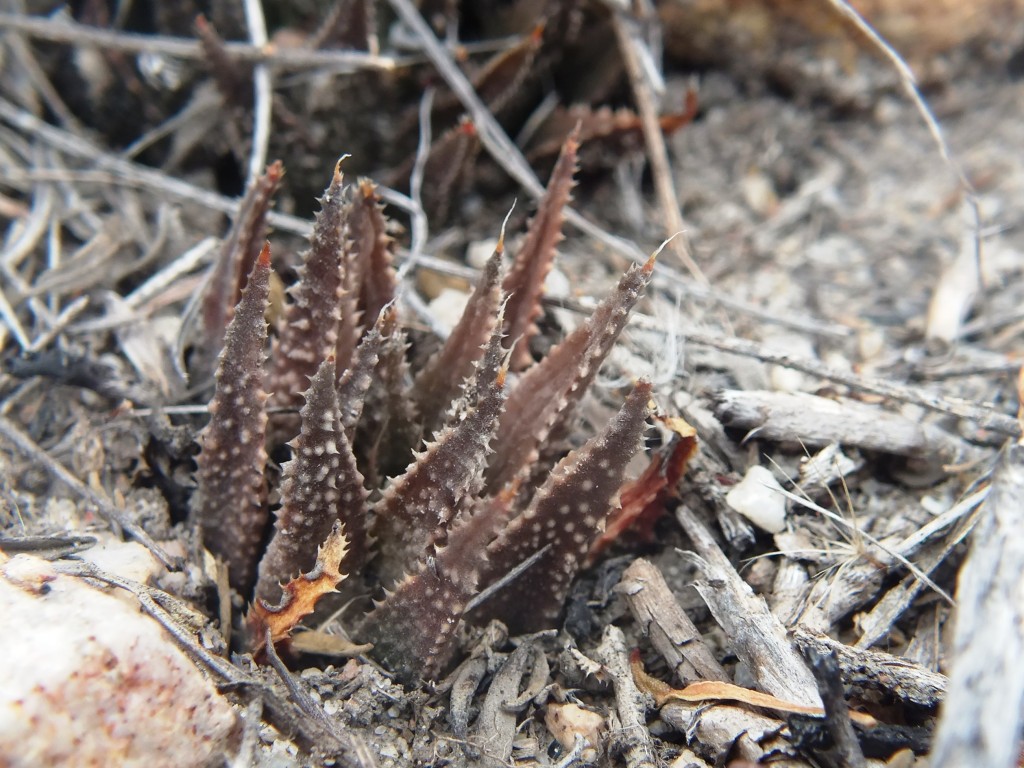

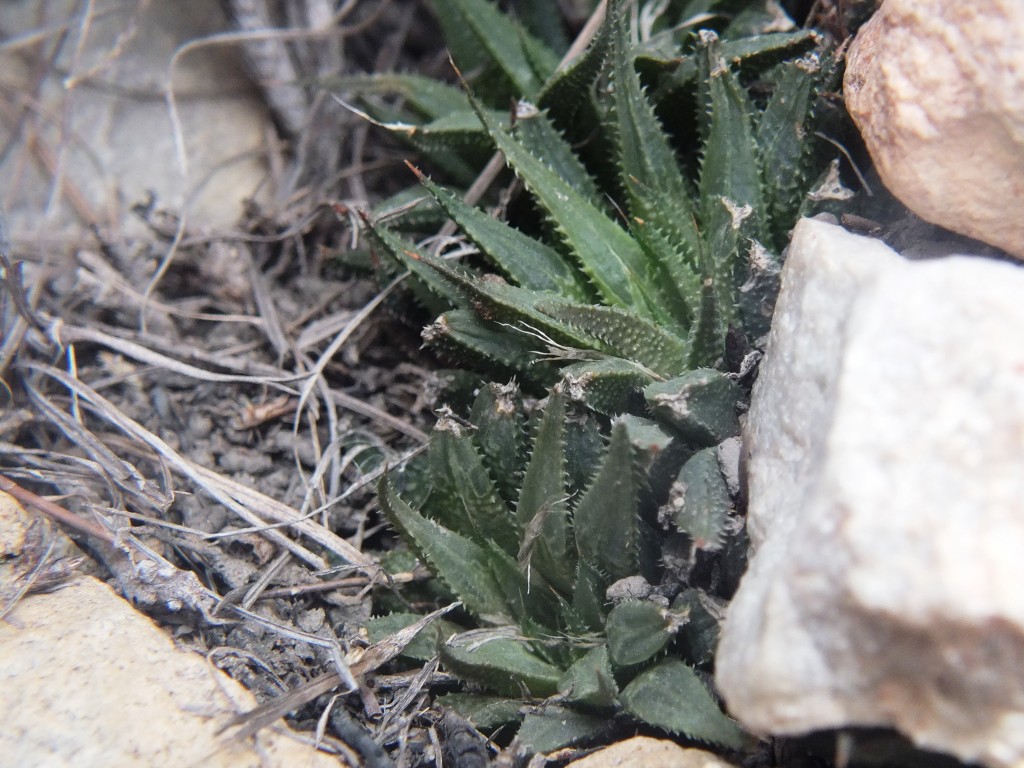
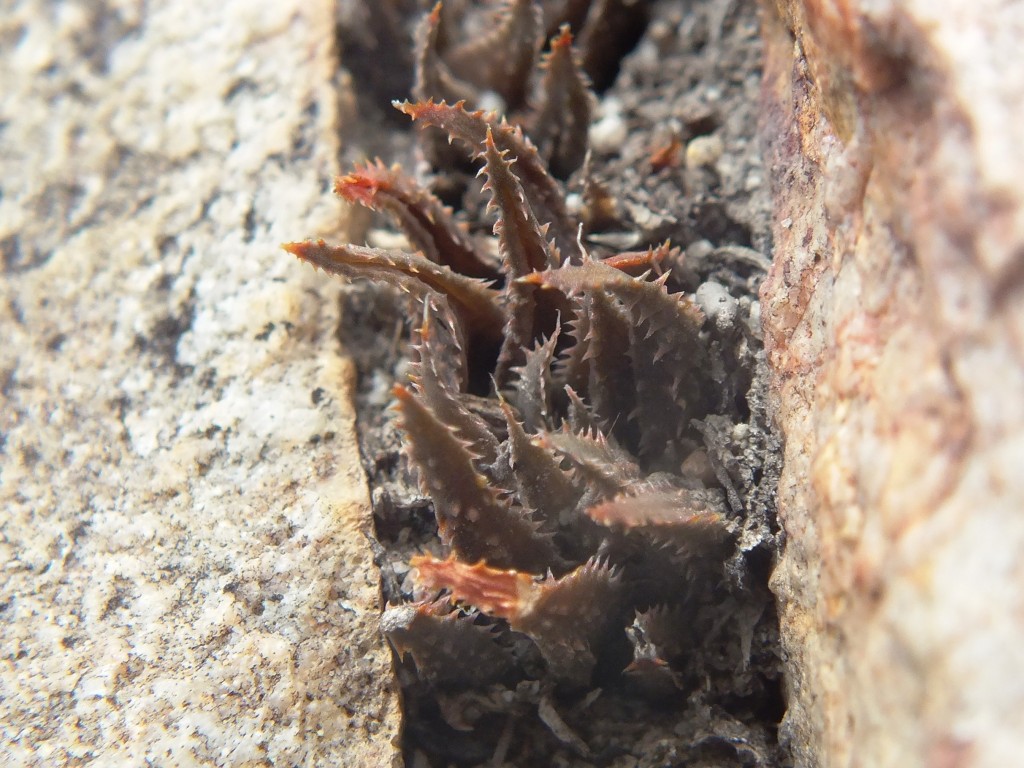
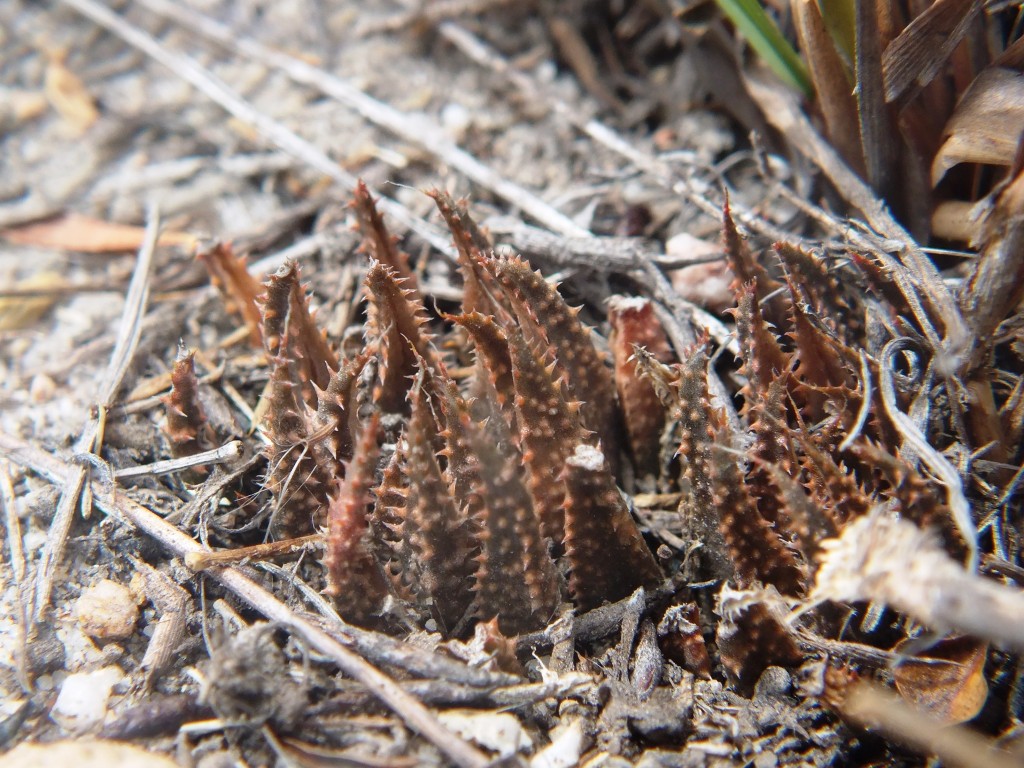

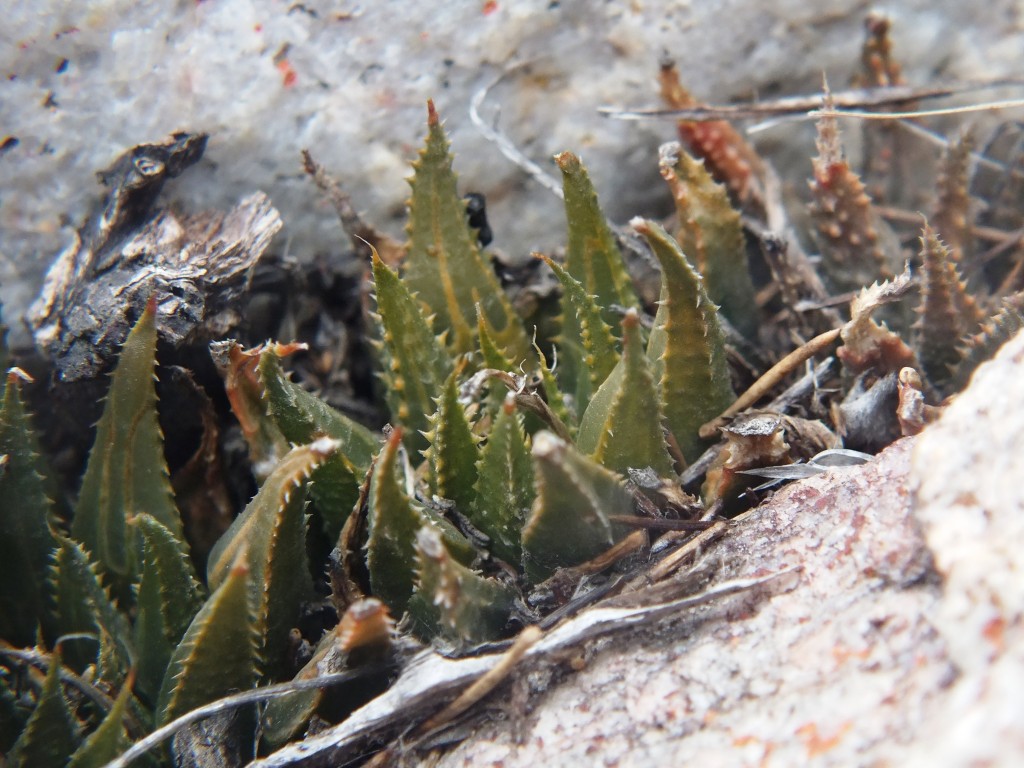
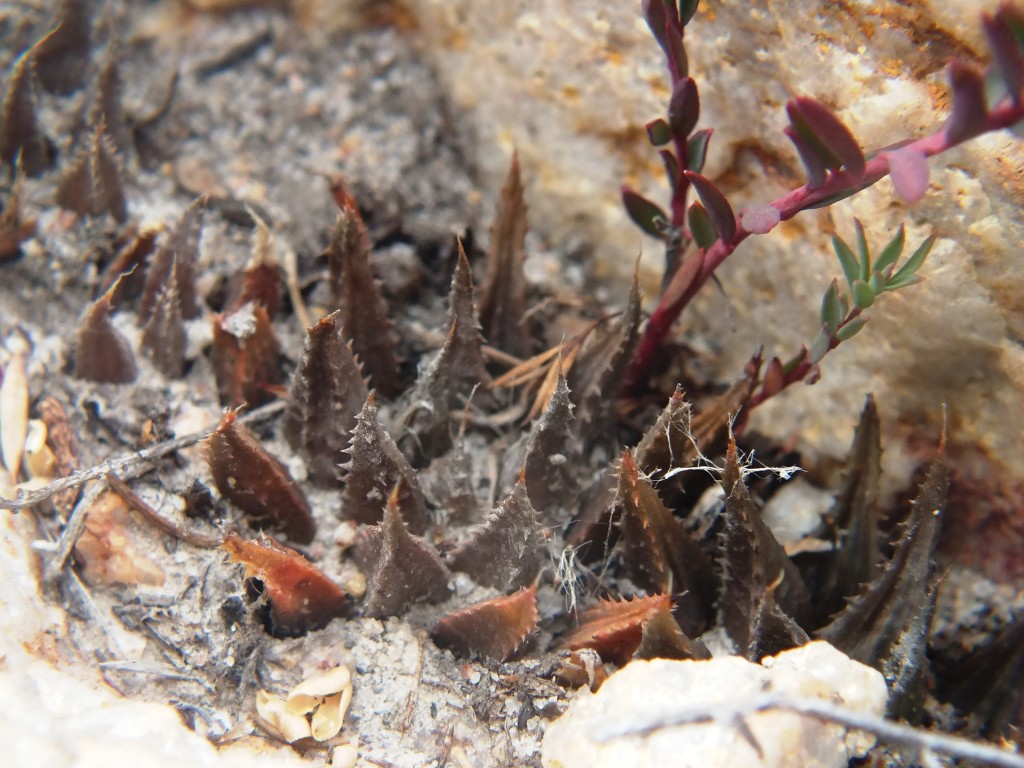


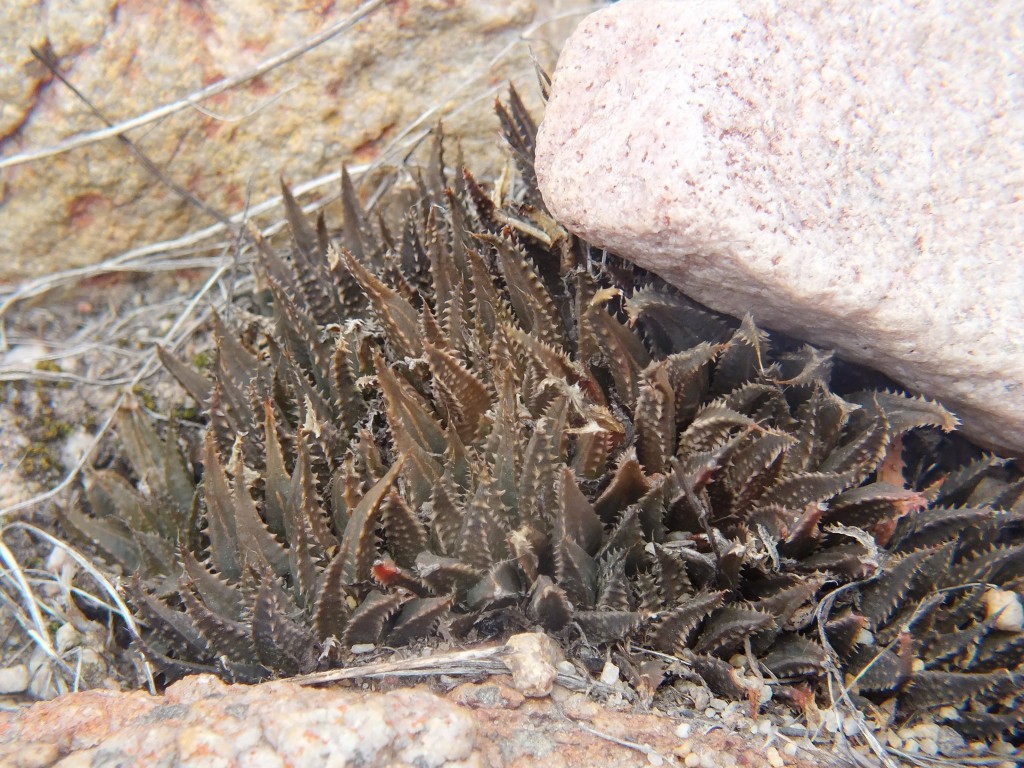
MBB8030 H. mirabilis SW Klipport
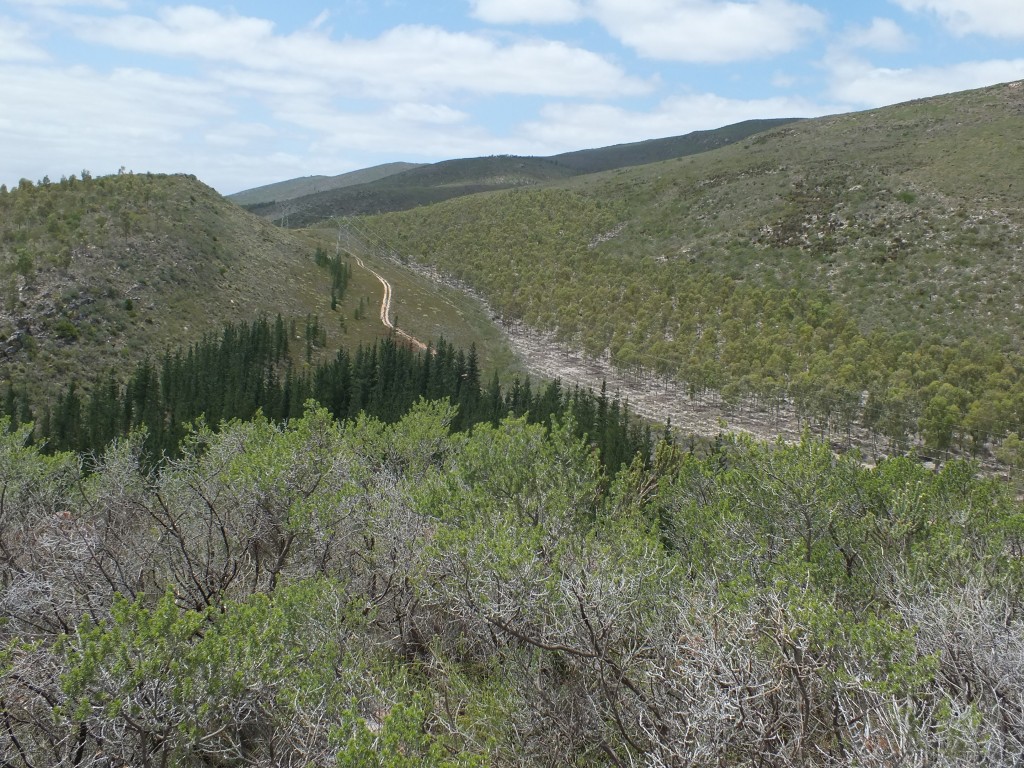
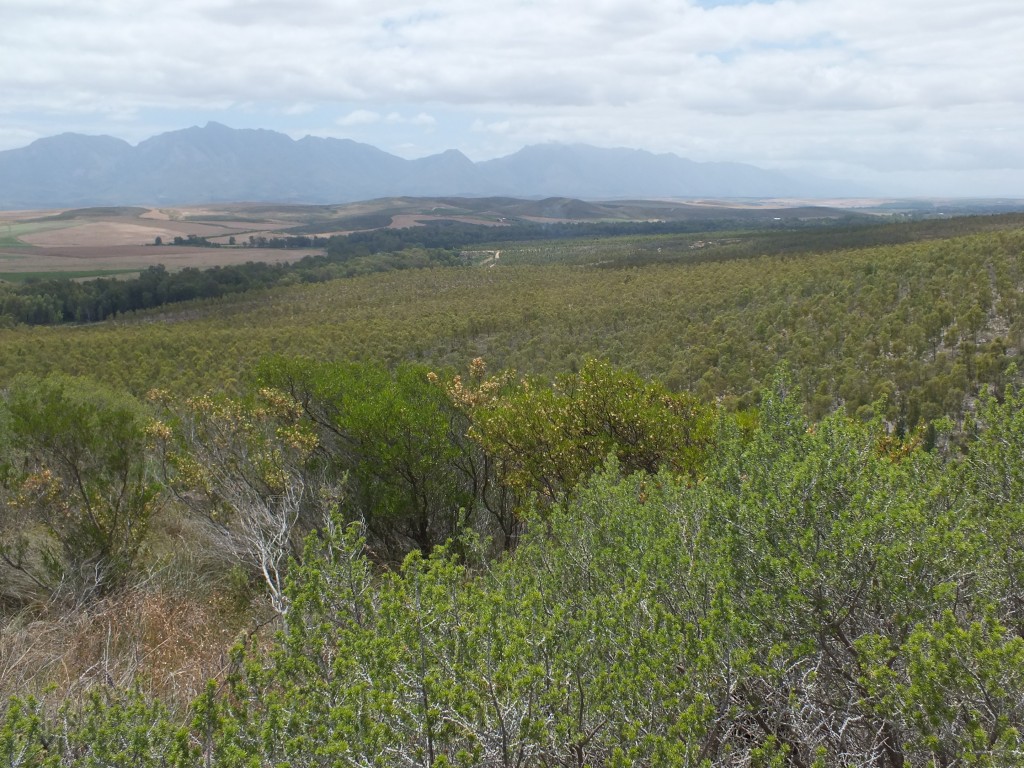
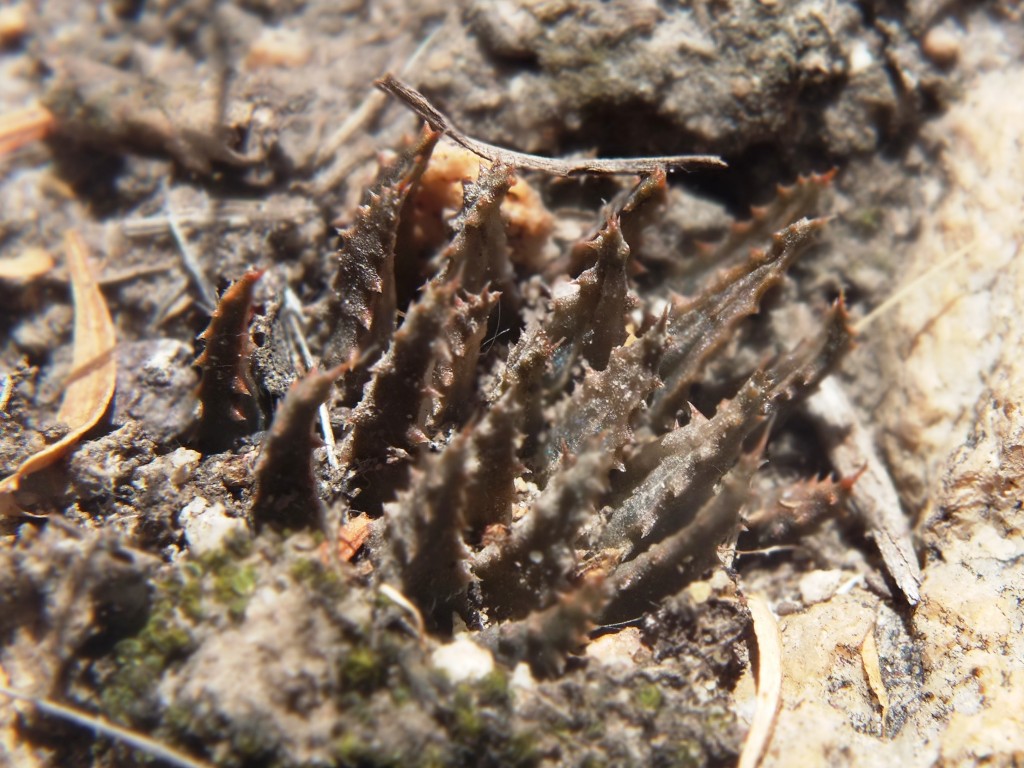
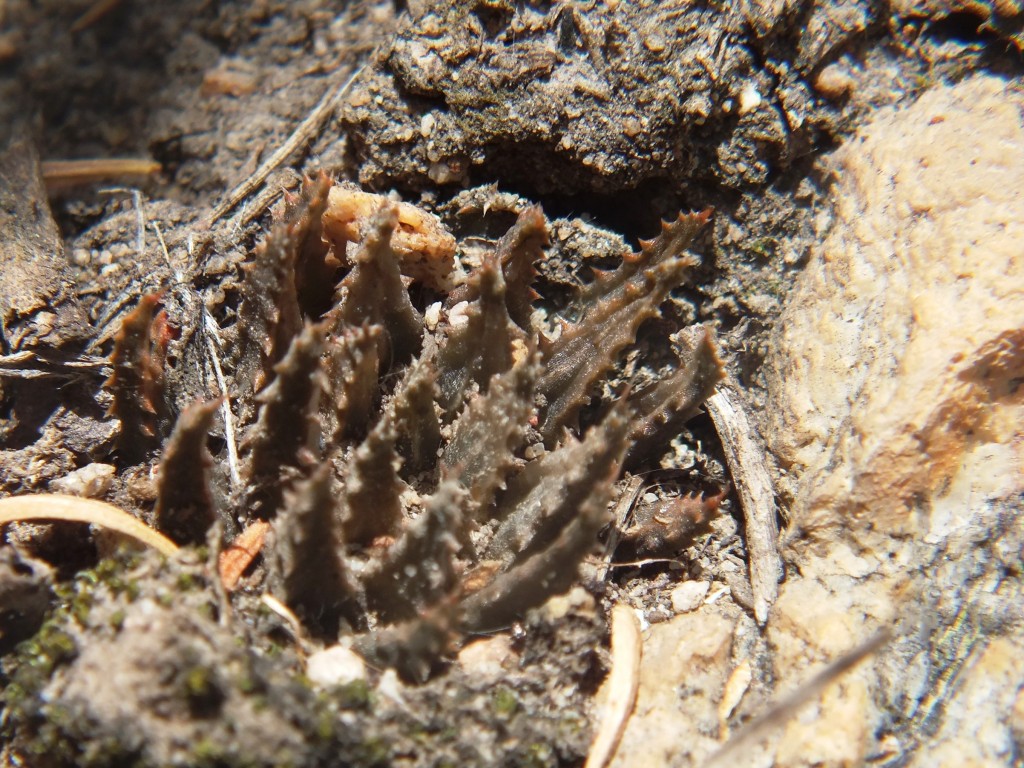
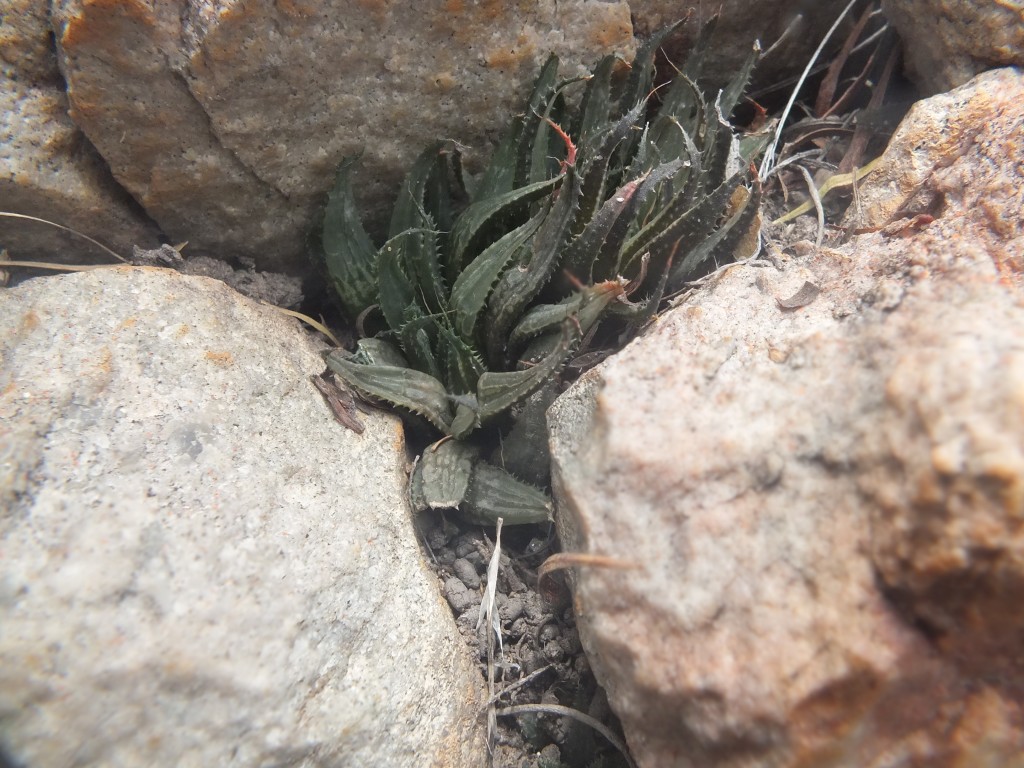
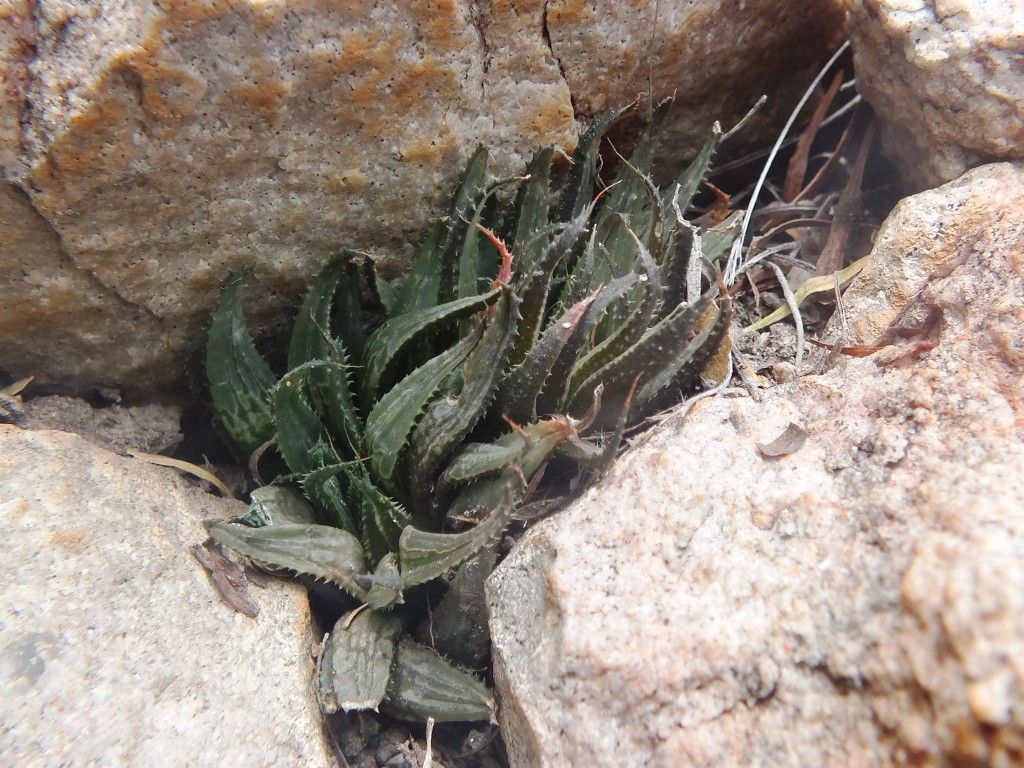
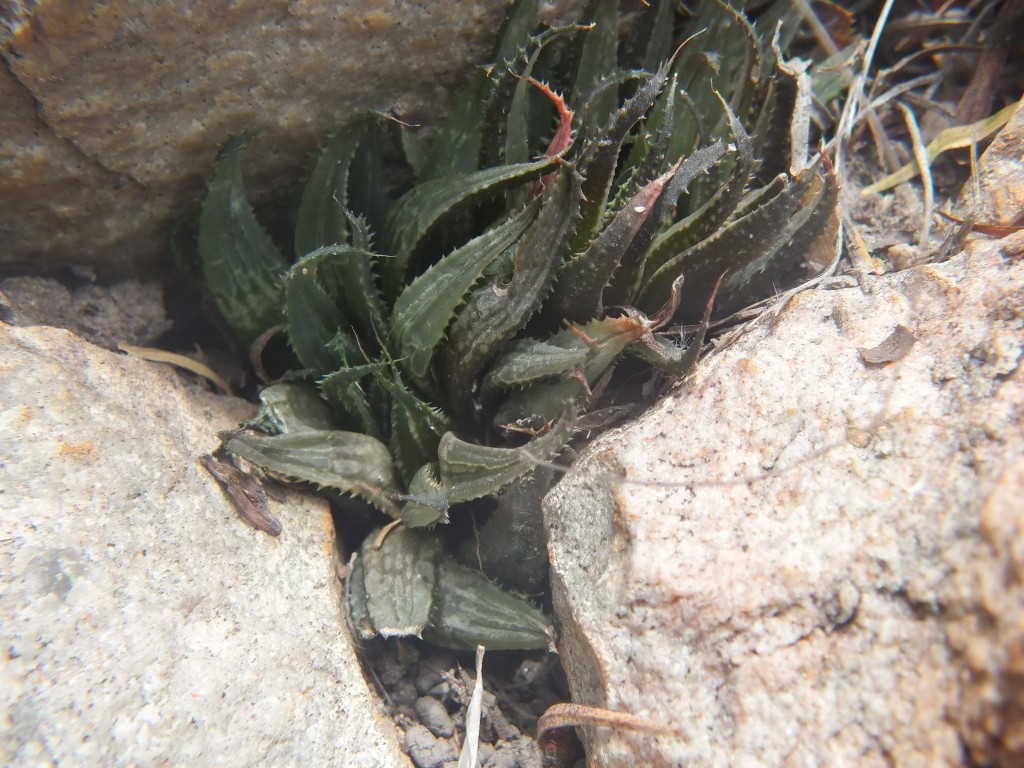

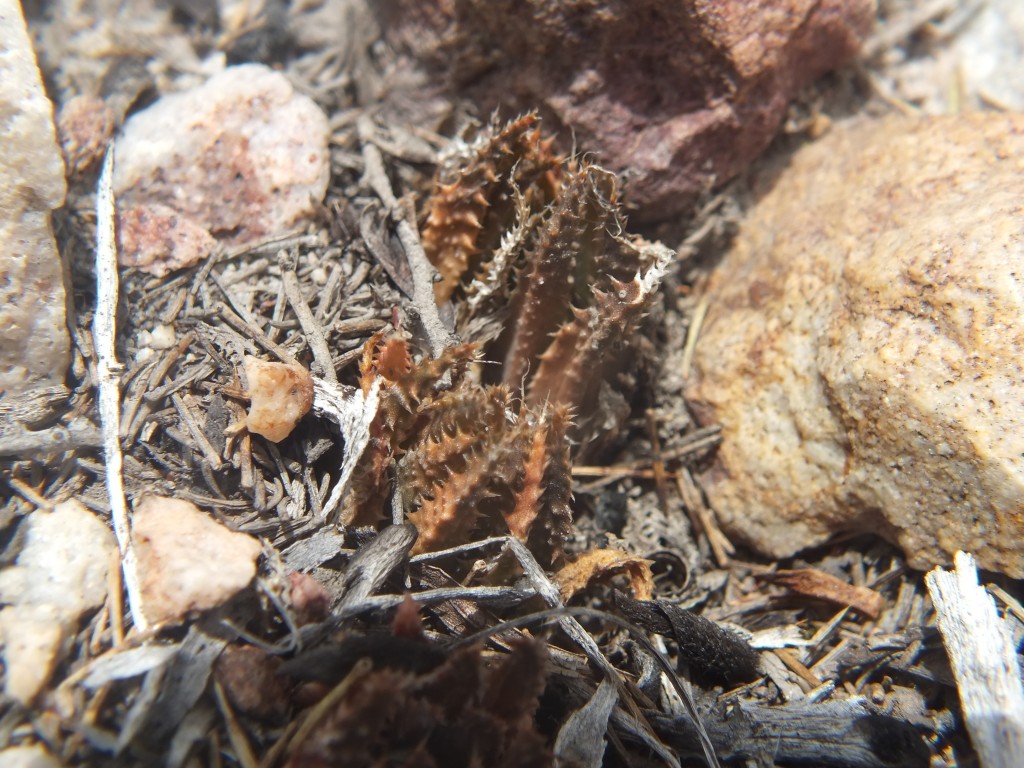
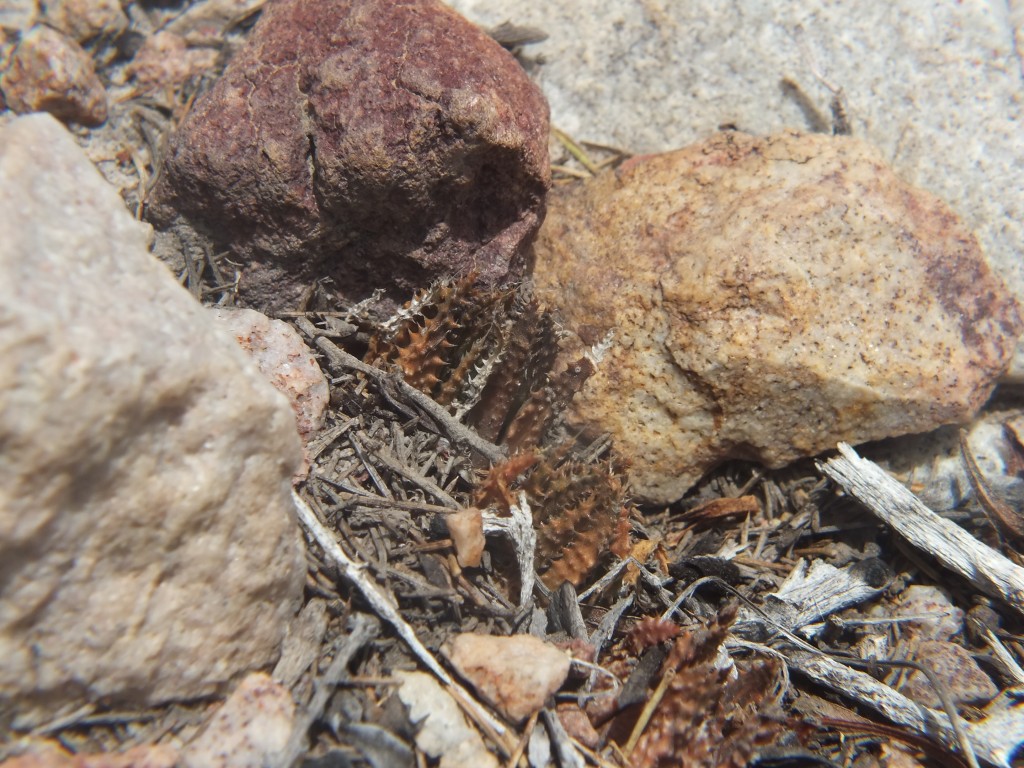
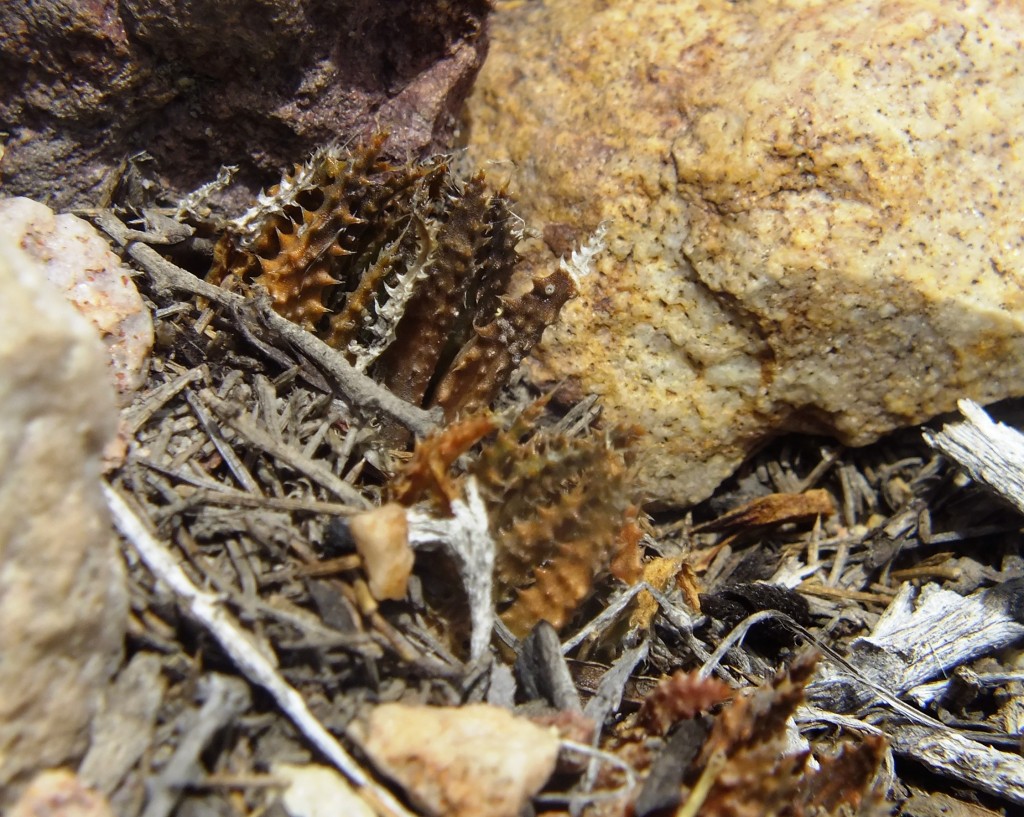
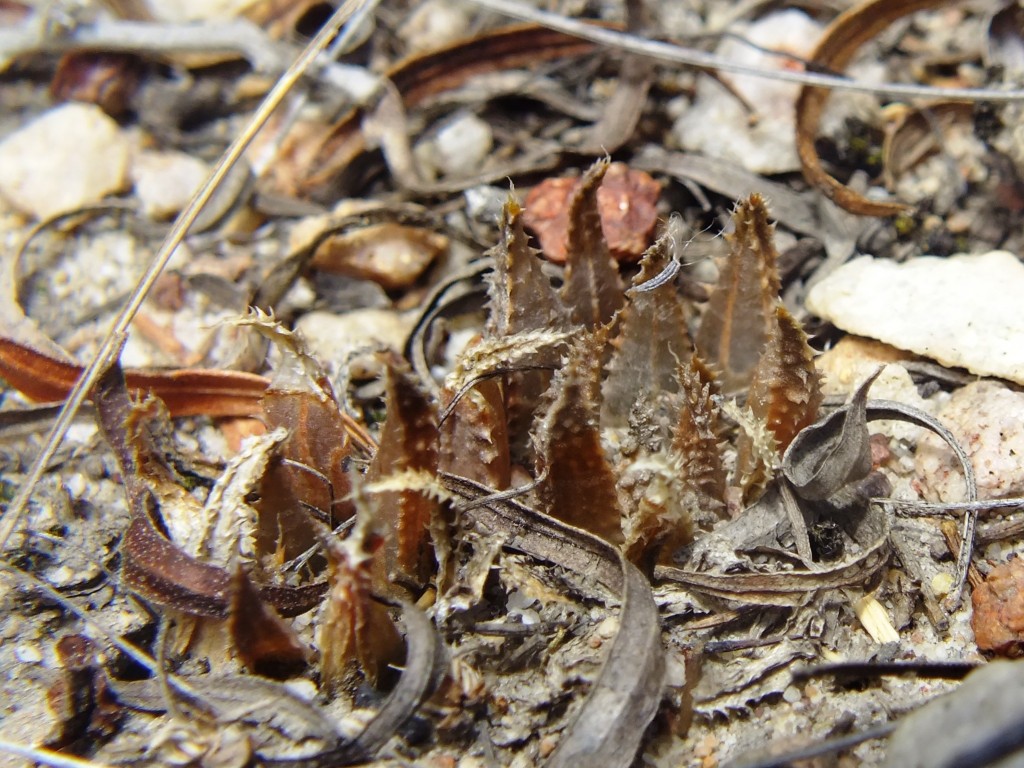
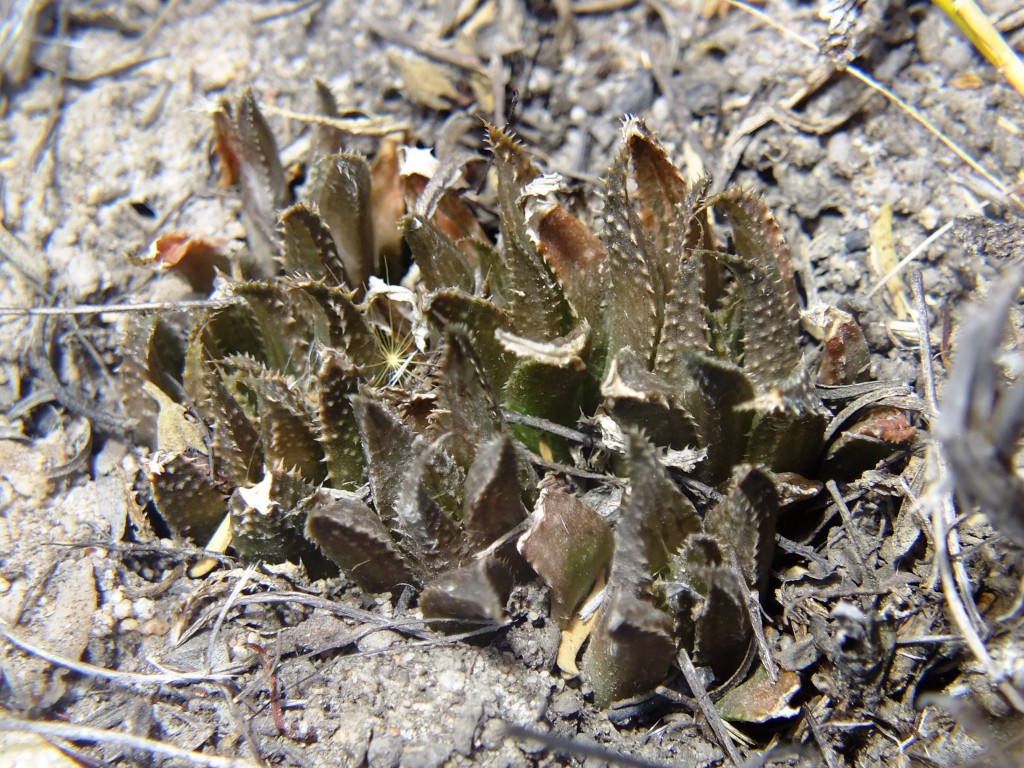
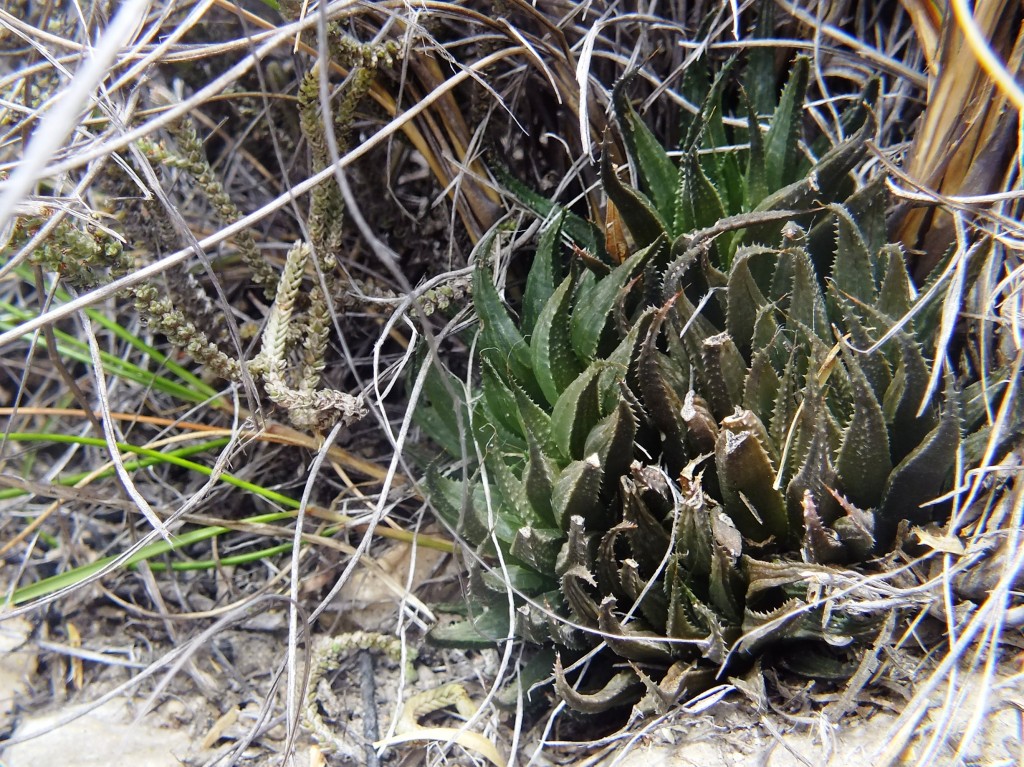
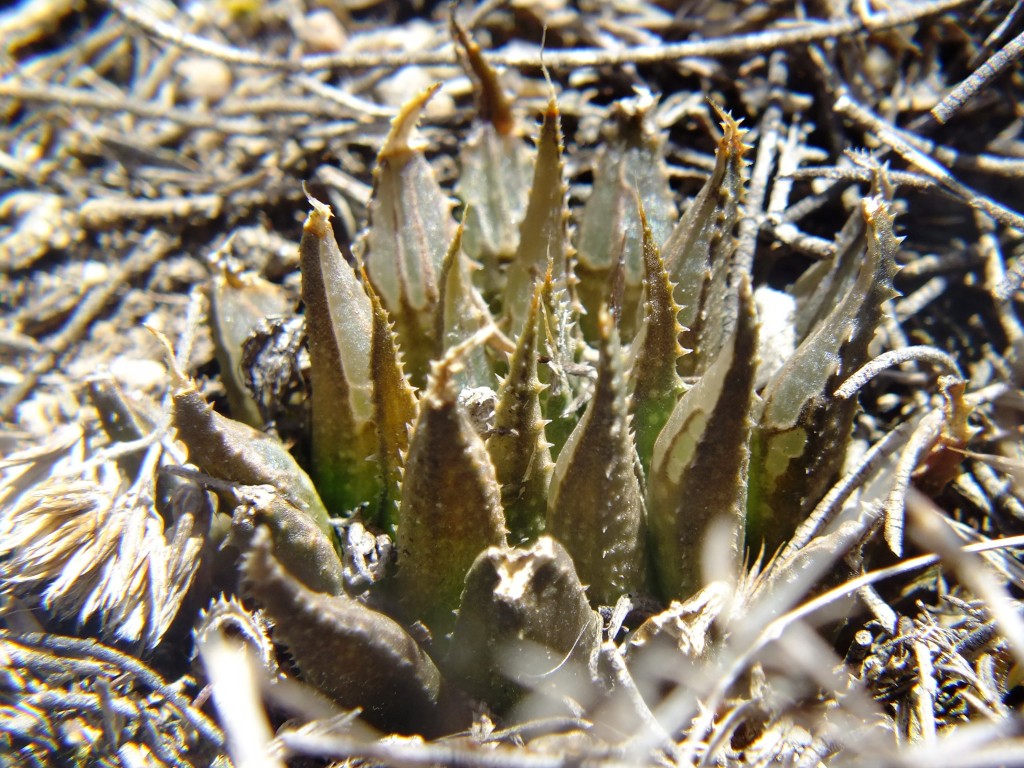
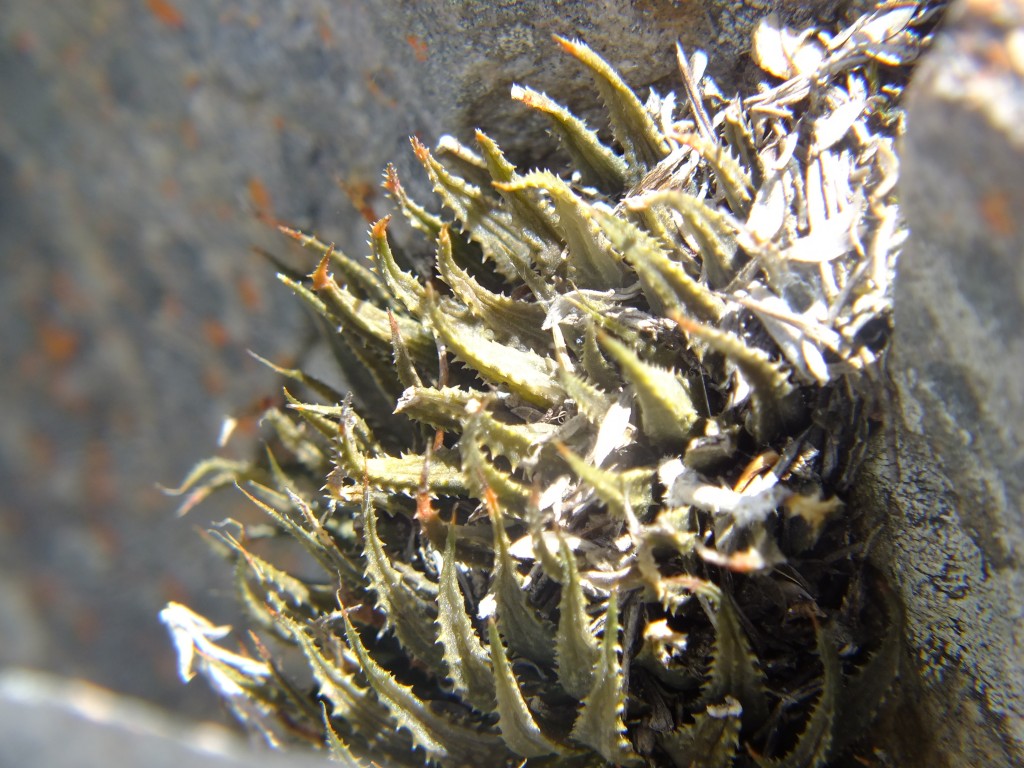
MBB8031 H. mirabilis SW Klipport
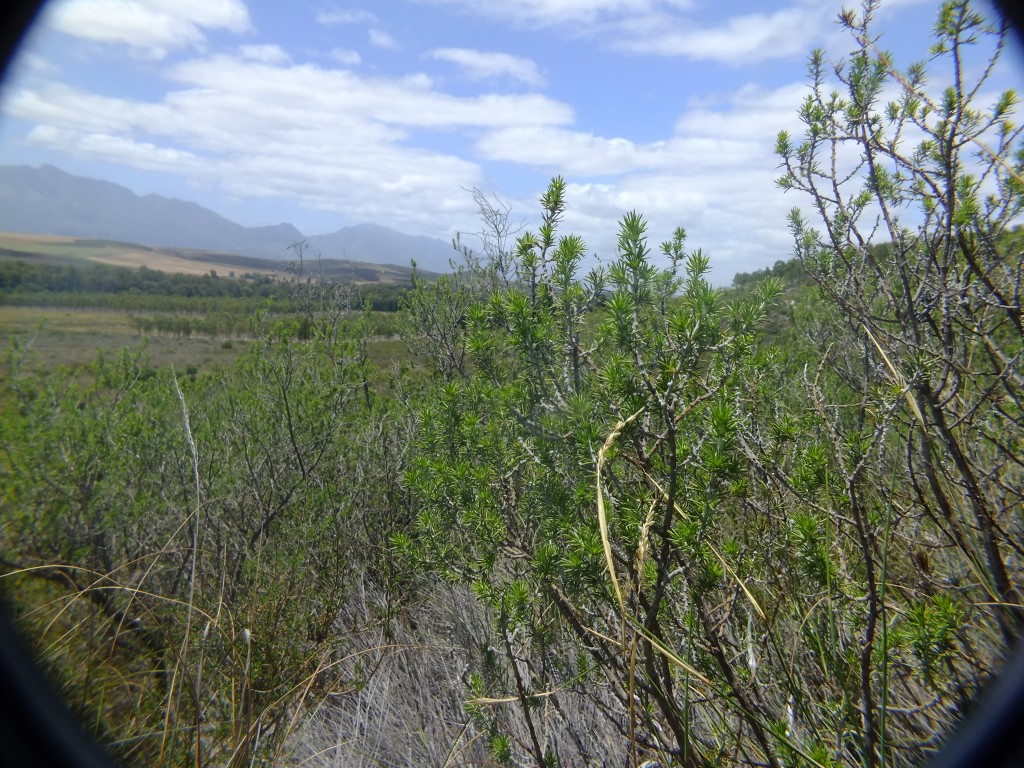
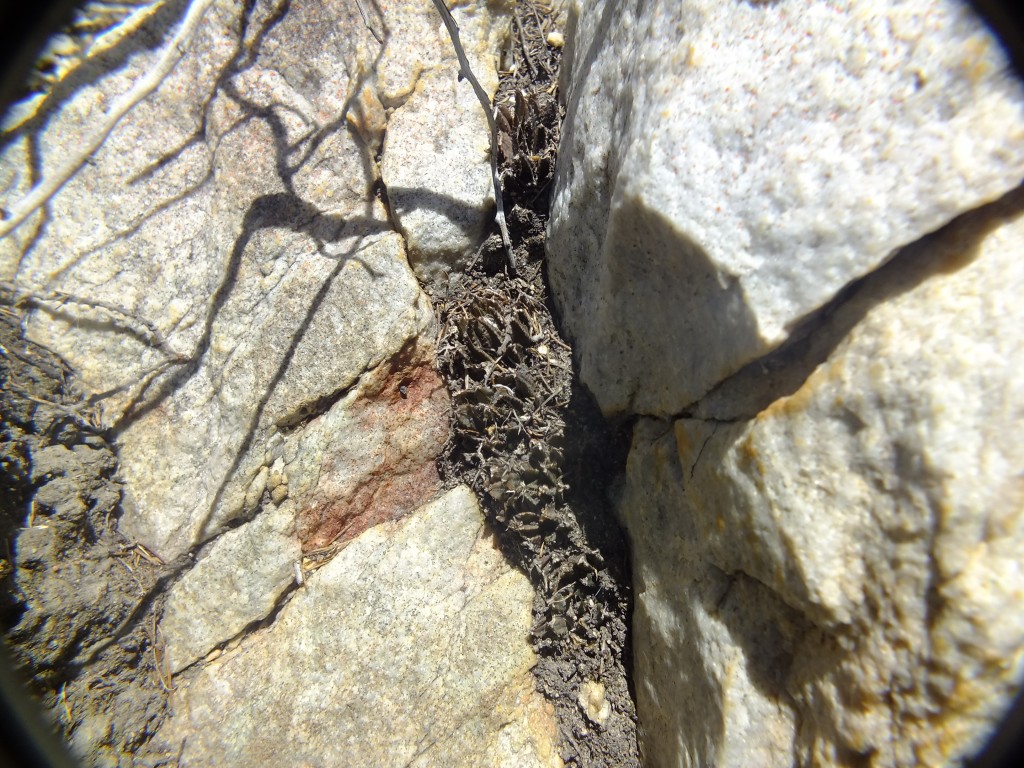
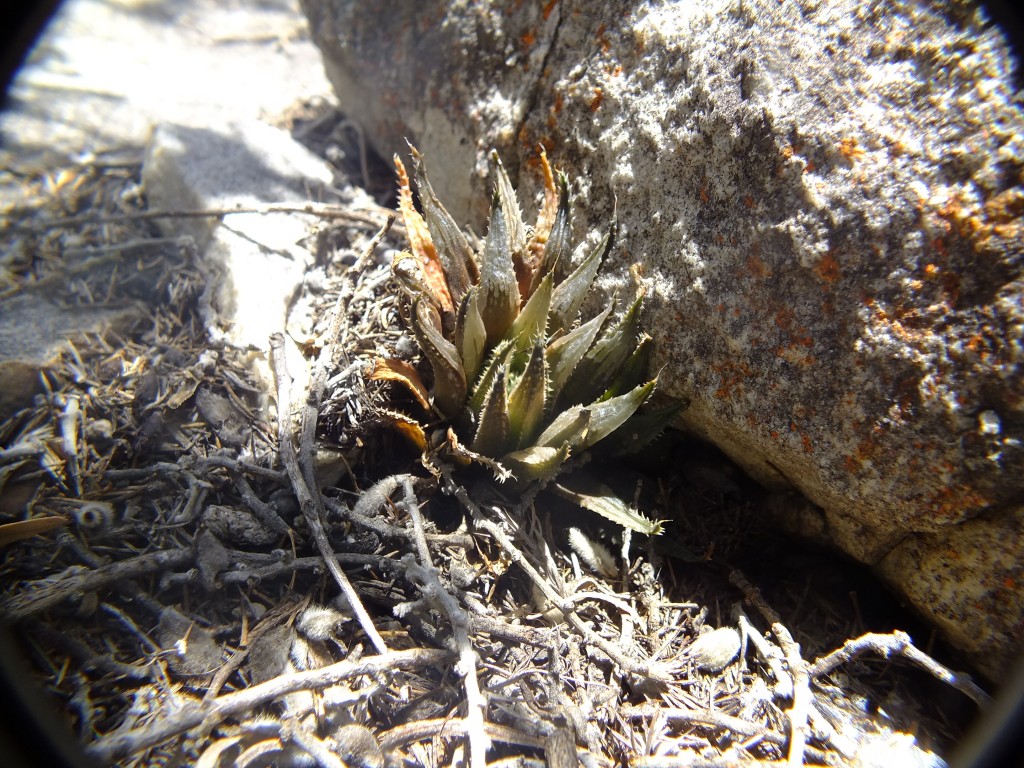
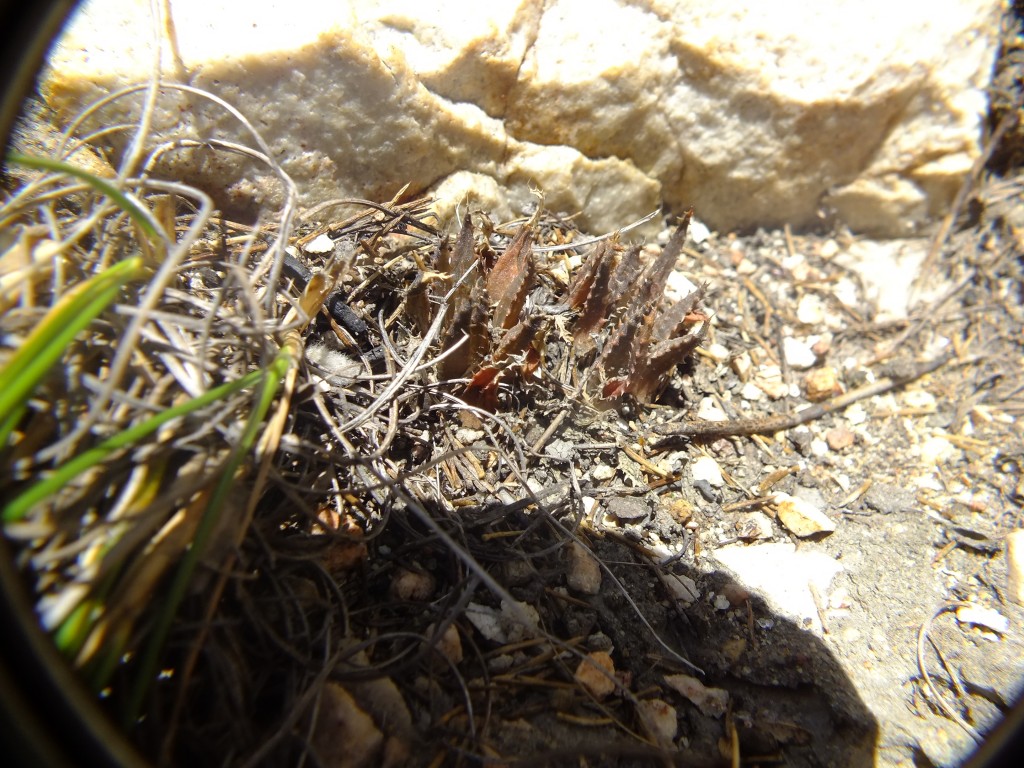
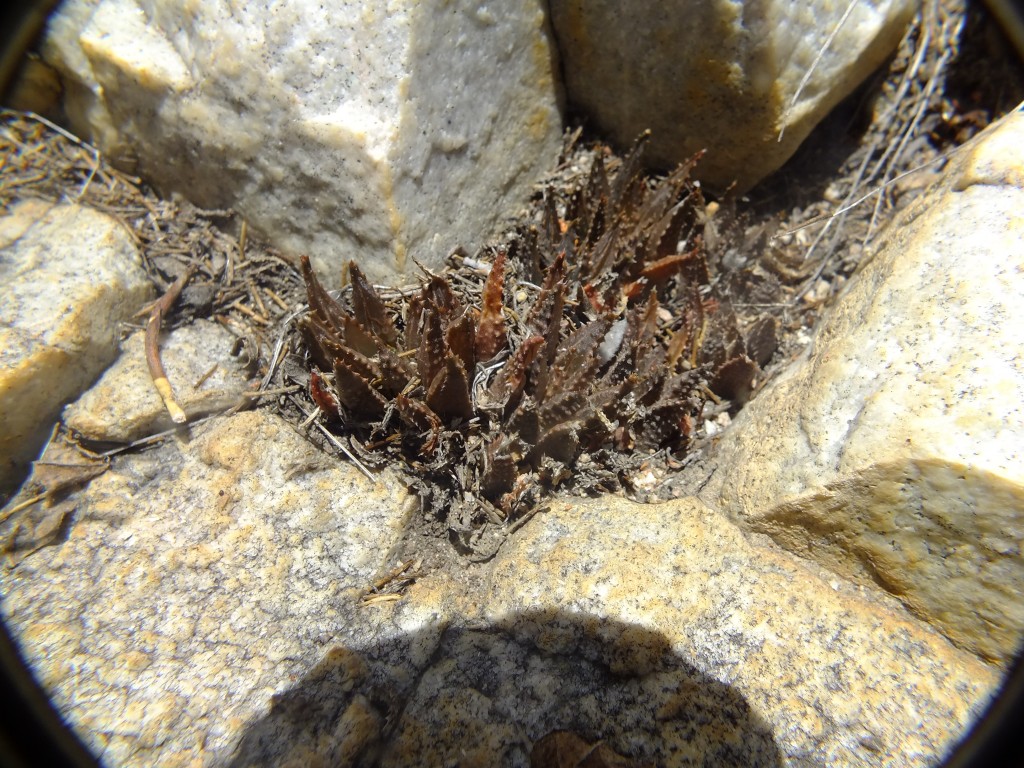
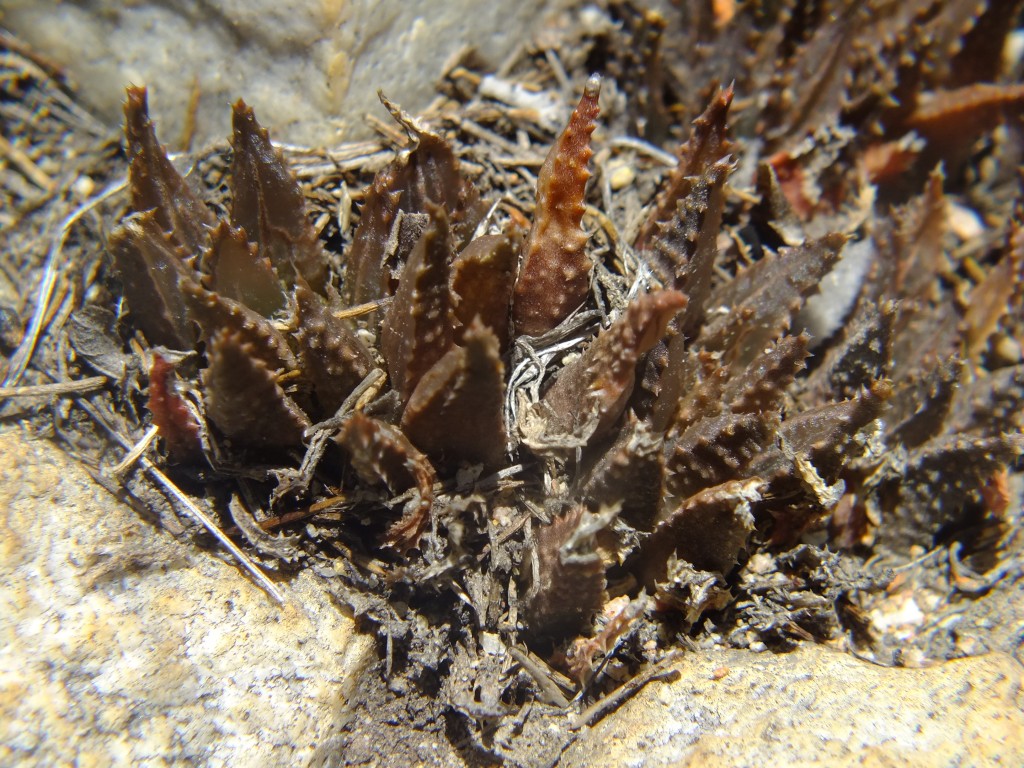
♦
